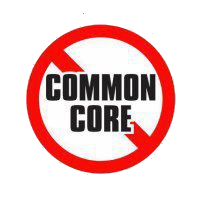The Manchester School District recently released the “draft” standards for Math and English. We asked Ze’ev Wurman to take a look and offer some feedback. Here are his initial thoughts afterquickly looking over the draft standards in Mathematics.
Our hope is that Manchester understands they have a long way to go in order to develop superior academic standards. Manchester residents made it clear that they do NOT want Common Core Standards for the students in the district
I took a quick look at the Manchester standards that you pointed to (http://curriculum.mansd.org/resource-documents/standards-development). I ended up not happy.
What they did is take the CC as is as a base column, and offer two additional columns: One that offers additions to the CC, and one that offers easy-to-read rewrite of the CC.
I see the following big problems in K-8.
1. The Common Core is taken as a base, and essentially *nothing* is eliminated in K-8, including all of the embedded pedagogy in CC standards. A *single* exception I could quickly find was in the grade 8 geometry that has to do with using rigid transformations to prove congruence and similarity. All the rest of CC seems intact in the Manchester draft.
2. The addition column has a handful of minor additions in the early grades, and that’s about it. No major changes have been made to capstone standards so, for example, integer addition/subtraction mastery is still in grade 4, multiplication in grade 5, division in grade 6. In less critical areas such as geometry, sum of angles in a triangle is still in grade 8, two years behind typical progression. Circles are still in grade 7, a year or more late. It goes to show the reluctance of shifting anything in K-8 around, out of the Common Core sequencing.
3. The easy-to-read column is a mixed bag. Sometimes the language is clearer, but sometimes the language actually corrupts what the Common Core correctly specified. A prominent example are grade 4/5 (but not 6!) changes from “the standard algorithm” to “a standard algorithm” in arithmetic operations. The “a” version can easily claim the lattice method of multiplication as being “a standard algorithm” replacing “the standard algorithm.” I don’t think Manchester necessarily meant it this way, but why the change? A handful of other language changes seem to be more helpful, but nothing earth-shattering, really.
Bottom line, the K-8 content is effectively Common Core with minor cosmetic changes.
Regarding 9-12 the picture is somewhat different.
– The standards seem to have a mix of CC and other sources.
– They are still arranged in clusters rather than courses making it harder to see what is missing.
– The content doesn’t include much beyond Algebra 2, so no support for STEM-intending students. Even the little CC has beyond algebra 2 seems to be absent.
Consequently, without knowing what this whole content is supposed to represent (only A1/A2/Geometry? More? Less?) it is difficult to pass judgment. I think Manchester would do well to defined the content in a course-based manner, which will make it easier on them — and everybody else — to evaluate the completeness and quality of the high school content.
